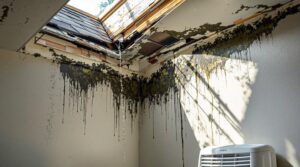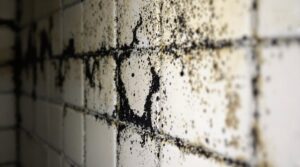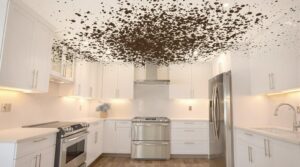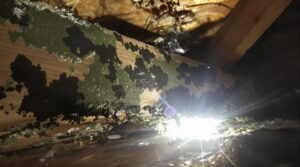Renters insurance offers limited coverage for mold damage when caused by sudden, covered perils like burst pipes or appliance malfunctions. Standard policies typically provide $1,000-$10,000 per occurrence, though coverage terms vary between providers. Pre-existing conditions, gradual deterioration, and maintenance-related mold issues are generally excluded. Geographic location and climate substantially impact coverage needs, with humid coastal areas facing elevated risks. Understanding specific policy parameters and documentation requirements proves essential for successful claims.
Key Takeaways
- Renters insurance typically covers mold damage only when caused by covered perils like burst pipes or appliance malfunctions.
- Coverage limits generally range from $1,000 to $10,000 per occurrence for sudden and accidental mold damage.
- Mold from gradual issues, poor maintenance, or pre-existing conditions is usually excluded from standard renters insurance policies.
- Flood-related mold damage requires separate flood insurance coverage and is not included in basic renters policies.
- Proper documentation, including photos and professional assessment reports, is essential for successful mold damage claims.
Understanding Basic Mold Coverage in Renters Insurance
While renters insurance provides coverage for various types of property damage, its protection against mold damage operates under specific conditions. Coverage typically extends to mold growth resulting from sudden, covered perils such as burst pipes, appliance malfunctions, or storm-related water intrusion. Fire suppression efforts that lead to water damage and subsequent mold are also generally included under standard policies.
Insurance verification is critical, as coverage parameters vary substantially between providers. Most policies exclude mold resulting from long-term moisture issues, poor ventilation, or maintenance neglect.
Professional moisture testing may be necessary to determine the cause and timeline of mold development, as gradual water seepage and pre-existing conditions are typically not covered. Additionally, flood-induced mold requires separate flood insurance coverage. Understanding these distinctions is essential for renters to effectively manage their insurance claims and maintain appropriate coverage for potential mold-related incidents. Standard policies typically limit mold coverage limits to between $1,000 and $10,000 per occurrence.
Common Causes of Mold That Are Typically Covered

When examining renters insurance coverage for mold damage, several common causes consistently qualify for protection under standard policies. These typically include sudden water damage from burst pipes, appliance overflows, and HVAC system failures. Storm-related incidents that compromise the building structure, such as roof leaks or broken windows, also generally fall under covered perils.
Natural disasters present another category of covered causes, encompassing windstorms, hail damage, and water intrusion from severe weather events. Additionally, fire suppression efforts that result in water damage can lead to covered mold growth.
Immediate Response to these incidents is essential, as insurers expect policyholders to take reasonable Preventive Actions to minimize damage. Coverage extends to personal property affected by mold resulting from these sudden and accidental events, though one should understand that gradual water damage or maintenance-related issues typically remain excluded from standard policies. Professional remediation costs can range from basic mold coverage of $1,000 to $10,000 per incident depending on the specific policy terms.
Exclusions and Limitations in Mold Coverage
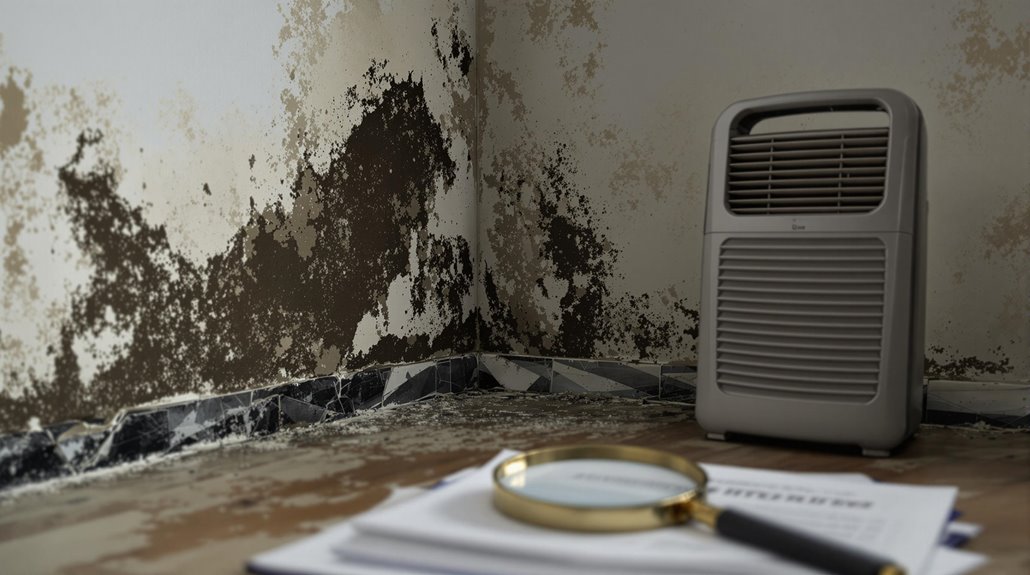
Most standard renters insurance policies contain substantial exclusions and limitations regarding mold coverage, particularly for damage resulting from gradual deterioration or maintenance-related issues. Coverage restrictions typically exclude mold caused by persistent conditions, such as ongoing leaks, poor ventilation, or tenant neglect. Pre-existing conditions and damage from flooding or sewer backups are also generally not covered unless additional endorsements are purchased.
Documentation requirements play a vital role in determining coverage eligibility. Insurers often require proof that mold resulted from a covered peril rather than long-term exposure or lack of maintenance.
Policy terms vary considerably by region, with properties in humid or flood-prone areas facing stricter limitations. Additionally, most policies exclude mold inspection costs and may limit coverage even when endorsements are in place. Understanding these restrictions is essential, as landlord responsibilities and tenant liability can affect coverage determinations in mold-related claims. Similar to high-value items that require scheduled personal property coverage, extensive mold damage may need additional endorsements for full protection.
The Cost of Mold Remediation and Insurance Limits

Mold remediation costs typically range from $10 to $25 per square foot, with small areas under 25 square feet costing $250-$625 and larger spaces of 300 square feet reaching $3,000-$7,500.
Insurance policies often contain specific coverage limits for mold damage, which may fall short of extensive remediation needs that can escalate to $30,000 for whole-house treatment.
The complexity of remediation location substantially impacts costs, with HVAC systems requiring $3,000-$10,000 and contaminated drywall ranging from $1,000-$20,000 in treatment expenses.
Public adjuster claims can result in 40-50% higher insurance settlements for mold damage coverage.
Average Costs Per Square Foot
Professional mold remediation services typically charge between $15 to $30 per square foot, with costs varying substantially based on the extent of contamination and location of the infestation.
Square footage calculation plays a vital role in determining remediation estimates, with smaller areas (10-100 sq ft) ranging from $500 to $1,500, while medium-sized spaces (100-300 sq ft) can cost between $1,500 and $6,000.
Location considerably impacts these costs, particularly when dealing with hard-to-access areas like HVAC systems, which can range from $2,000 to $10,000.
Specialized equipment requirements and the type of mold present also factor into the final cost. Full remediation of larger areas (300-1,000 sq ft) typically commands premium rates, with expenses potentially reaching $15,000 for complete treatment.
Most standard homeowner insurance policies provide basic mold coverage between $1,000 to $10,000 when damage results from sudden perils.
Coverage Caps and Limitations
Standard renters insurance policies establish specific coverage caps and limitations for mold-related claims, with typical personal property coverage limits ranging from $2,500 to $10,000 for mold damage. Liability coverage typically provides at least $100,000 to address mold remediation costs and potential legal expenses when the renter is found liable.
Policy maximums vary substantially between insurance providers, with some implementing strict coverage restrictions or complete exclusions for mold-related incidents.
Claims must meet specific criteria, including proper documentation of damaged items and proof that the mold resulted from a covered peril. Coverage is generally denied for damage caused by neglect, poor maintenance, or excluded perils such as flooding.
Additional endorsements may be necessary in high-risk regions to guarantee adequate protection against mold-related losses.
Working with public adjusters can significantly increase claim settlements for mold-related damages.
Regional Factors Affecting Mold Coverage Needs
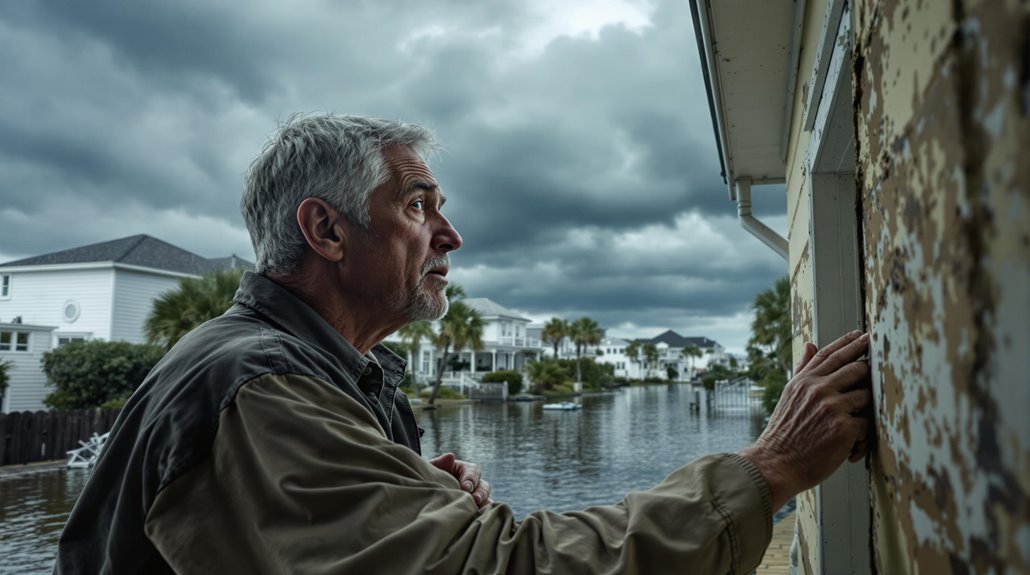
Regional climate patterns substantially influence the need for thorough mold coverage in renters insurance, with humid coastal areas and flood-prone regions facing heightened risks.
Insurance policies vary by location, reflecting the specific environmental challenges and probability of mold-related claims in different geographical areas.
Residents in high-risk zones, particularly those in flood-prone regions like Houston or New Jersey's coastal counties, should carefully assess their coverage needs and consider supplemental policies to address potential gaps in standard renters insurance.
Property insurance basics include protection against perils like water damage that could lead to mold growth.
Climate Impact on Coverage
Geographic location and climate conditions substantially influence the need for complete mold coverage in renters insurance policies.
Regions characterized by tropical patterns and high humidity levels present elevated risks for mold proliferation, particularly in coastal areas where moisture zones create ideal conditions for fungal growth. Properties in these environments face increased exposure to water damage and subsequent mold development.
Insurance considerations vary considerably based on regional climate factors. Areas prone to storms, flooding, or extreme temperature fluctuations may require additional endorsements beyond standard coverage limitations.
Properties in humid climates demand particular attention to ventilation systems and moisture management protocols. Insurance providers often adjust their coverage terms according to location-specific risks, making it essential for renters in high-risk areas to secure thorough mold protection through supplementary policy options.
Regular property maintenance schedules can help reduce insurance premiums while minimizing mold-related risks.
Flood Zone Risk Assessment
Properties situated within designated flood zones face heightened exposure to mold-related risks, necessitating thorough insurance coverage assessment. Floodplain mapping plays a vital role in determining coverage requirements, as standard renters policies typically exclude mold damage resulting from flooding events. Properties must often meet specific elevation requirements to qualify for certain coverage options.
In flood-prone regions, policyholders should note that while sudden water damage may trigger mold coverage, gradual seepage remains excluded.
Complete protection often requires supplementary coverage through specialized policies like Site Pollution Liability or Mold Matter Coverage. These additional policies can address remediation expenses, property damage, and bodily injury claims.
Property managers and tenants in coastal areas face particularly complex challenges due to elevated humidity levels and frequent water exposure, making proper coverage selection essential.
Professional remediation services typically maintain indoor humidity levels between 30-50% to prevent future mold growth.
Local Insurance Policy Variations
Insurance policies governing mold coverage frequently exhibit substantial variations across different regions, reflecting the distinct environmental challenges and risk factors prevalent in each locale.
These policy deviations manifest particularly in areas prone to higher humidity levels, frequent storms, or flooding, where insurers adjust their coverage terms accordingly.
Territorial variances in coverage may include specific limitations on mold remediation costs, varying deductibles, and distinct requirements for prevention and maintenance.
Standard renters insurance policies typically cover mold damage resulting from covered perils, such as sudden water damage from burst pipes.
However, the extent of coverage differs based on regional factors, with some areas requiring additional endorsements or separate policies for thorough mold protection.
Understanding these local variations is essential for adequate coverage assessment.
Working with public adjusters can significantly improve claim outcomes by ensuring proper documentation and valuation of regional-specific mold damage issues.
Steps to File a Successful Mold Damage Claim

Filing a successful mold damage claim requires a systematic approach and careful attention to documentation. Upon discovering mold, tenants should immediately notify their insurance provider and initiate evidence gathering through detailed photographs and videos of affected areas. Documentation should include a thorough inventory of damaged items, complete with proof of ownership and value estimates.
A critical component involves identifying and documenting the source of mold growth, as coverage typically depends on whether it resulted from a covered peril.
Tenants should maintain detailed records of all communications with insurance representatives and implement immediate damage prevention measures. When the insurance adjuster arrives, presenting organized documentation, including professional assessment reports and remediation estimates, strengthens the claim's validity.
Working with certified mold remediation specialists guarantees proper handling of the situation and supports the claim with expert testimony. Throughout the process, maintaining a claim journal and following up regularly with the insurance company helps track progress and secures timely resolution.
Additional Coverage Options for Enhanced Protection

Renters seeking complete mold protection can explore various supplementary coverage options beyond standard insurance policies. Mold-specific riders offer enhanced protections, typically increasing annual premiums by 5-10% while extending coverage to scenarios like high humidity damage that standard policies exclude. These supplemental endorsements often provide higher coverage limits and specific protections tailored to regional risks.
Standard policy extensions generally cover mold resulting from sudden water damage, such as burst pipes or appliance overflows. However, renters in high-risk areas may require additional coverage through specialized riders. Insurance providers offer varying levels of protection, with different coverage limits and deductibles.
When selecting enhanced coverage options, tenants should consider their location's specific risks, such as humidity levels and flood potential. Understanding policy terms, exclusions, and preventive requirements remains essential for maintaining coverage eligibility and maximizing protection against mold-related losses.
The Benefits Of Consulting A Public Adjuster
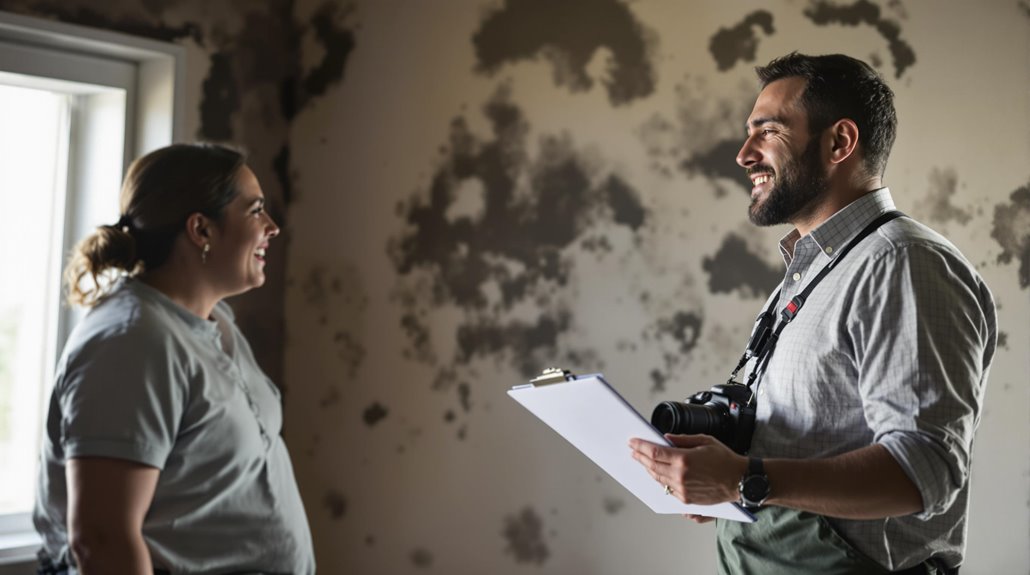
Consulting a public adjuster provides expert guidance through complex mold damage claims while ensuring objective assessment and documentation of damages.
These licensed professionals streamline the claims process by gathering thorough evidence, handling communications with insurers, and negotiating settlements on behalf of policyholders.
Studies indicate that claims handled by public adjusters typically result in higher settlements, often justifying their contingency-based fees of 10-20% through increased claim payouts and reduced policyholder stress.
Expertise In Insurance Claims
Insurance claims involving mold damage can present complex challenges that require specialized knowledge and expertise to navigate effectively. Public adjusters possess thorough policy understanding, enabling them to interpret complex coverage terms and identify potential benefits that policyholders might otherwise miss. Their expertise extends to understanding insurance company procedures and common tactics used during claims processing.
Through skilled claims navigation, public adjusters assist in gathering essential documentation, conducting thorough damage assessments, and preparing detailed proof of loss statements. They apply their technical knowledge to present claims accurately and comprehensively to insurance providers. Their proficiency in policy interpretation and claims management helps guarantee that policyholders receive appropriate compensation for mold-related damages, while their negotiation skills prove invaluable when addressing disputes or challenging claim decisions.
Objective Damage Assessment
When property owners face mold-related issues, objective damage assessment through a public adjuster provides essential advantages for claim resolution. Public adjusters conduct thorough structural analysis to identify both visible and concealed damage patterns, ensuring complete documentation of all affected areas.
These professionals utilize systematic evaluation methods to uncover hidden costs associated with mold remediation, including underlying causes such as water intrusion or ventilation issues.
Their unbiased assessment encompasses detailed property inspections, collaboration with remediation experts, and precise documentation of damage extent. Through objective evaluation, public adjusters analyze policy coverage limitations while advocating for policyholder interests.
Their professional network connections facilitate access to qualified contractors and materials, streamlining the restoration process and maximizing the potential for fair claim settlements based on accurate damage assessments.
Streamlined Claim Process
A public adjuster's involvement in mold-related claims creates a structured, efficient pathway toward resolution. These professionals streamline claim logistics by coordinating documentation, inspections, and communication channels between all parties involved. Their expertise in policy interpretation guarantees accurate claim submissions while minimizing potential errors.
The adjuster's systematic approach enhances process efficiency through professional guidance and advocacy. They organize necessary documentation, facilitate timely inspections, and maintain detailed records of all correspondence.
Their familiarity with insurance regulations enables them to navigate complex claim requirements while representing the policyholder's interests. Should disputes arise regarding coverage or settlement amounts, the adjuster negotiates with insurers and works to expedite resolution. This thorough management of the claims process helps guarantee fair settlements and reduces administrative burden on the claimant.
Higher Claim Payouts & Settlements
Professional representation through a public adjuster substantially increases the likelihood of securing higher claim payouts and more favorable settlements for mold-related damages.
Through strategic claim coordination and settlement optimization, public adjusters leverage their expertise to guarantee thorough documentation and effective negotiation with insurance carriers.
Key advantages of public adjuster representation include:
- Detailed assessment and documentation of all mold-related damages, leading to more accurate claim valuations
- Expert policy interpretation to identify maximum available coverage for mold remediation
- Strategic negotiation with insurance carriers to overcome potential claim denials or limitations
- Proactive dispute resolution and expedited settlement processes through professional advocacy
Their systematic approach to claim management typically results in markedly higher settlement amounts compared to policyholder-managed claims.
About The Public Claims Adjusters Network (PCAN)

The Public Claims Adjusters Network (PCAN) serves as a complete claims management organization that advocates for policyholders during insurance settlement processes. Through extensive Network Operations, PCAN provides complete claims solutions across all 50 states and maintains Global Partnerships spanning five continents, ensuring expert support for policyholders worldwide.
PCAN's licensed professionals specialize in managing claims from initial notice of loss through final settlement, offering dedicated expertise in policy analysis, damage assessment, and settlement negotiations.
Their adjusters possess extensive knowledge in construction costs, business interruption calculations, and specialized damage types, including mold remediation. The organization's call center provides immediate support for claims inquiries while maintaining seamless communication throughout the process.
The network's proven track record demonstrates success in securing favorable settlements through detailed documentation, thorough damage validation, and expert policy interpretation, making them a valuable resource for policyholders maneuvering through complex insurance claims.
Frequently Asked Questions
How Long Does Mold Remediation Typically Take to Complete?
Like a sliding scale, mold remediation cleanup duration varies substantially, with removal timeframes ranging from 1-2 days for minor cases to several weeks for extensive contamination requiring professional intervention.
Can I Stay in My Rental During Professional Mold Removal?
Occupancy during professional mold removal depends on contamination severity, health risks, and containment methods. Extensive infestations typically require temporary relocation, while minor cases may allow restricted occupancy with proper safeguards.
Will Filing a Mold Claim Increase My Future Insurance Premiums?
Filing a mold claim typically results in premium increases, as insurers perceive elevated property risk. Rate adjustments often follow claims, affecting both current policy terms and future coverage options.
What Certifications Should I Look for in a Mold Remediation Company?
With 87% of remediation projects requiring certified expertise, key verifications include IICRC, EPA, or NETI certifications. Proper license verification and current certification requirements guarantee qualified professional service delivery.
Does Renters Insurance Cover Temporary Relocation During Extensive Mold Remediation?
Renters insurance typically covers hotel expenses and displacement costs during mold remediation when caused by covered perils, subject to policy limits and documentation of sudden, accidental water damage events.
References
- https://quotewizard.com/renters-insurance/renters-insurance-and-mold-damage
- https://www.eduyush.com/en-us/blogs/insurance/does-renters-insurance-cover-mold
- https://jacobsladderky.com/2023/08/04/does-renters-insurance-cover-mold-damage/
- https://reaganenvironmental.com/does-renters-insurance-cover-mold/
- https://blocked.goodrx.com
- https://www.lendingtree.com/renters-insurance/what-does-renters-insurance-cover/
- https://renter.joinroost.com/renters-insurance/does-renters-insurance-cover-mold/
- https://www.thezebra.com/renters-insurance/coverage/does-renters-insurance-cover-mold/
- https://www.lemonade.com/renters/explained/does-renters-insurance-cover-mold-damage/
- https://www.policygenius.com/renters-insurance/does-renters-insurance-cover-mold/
